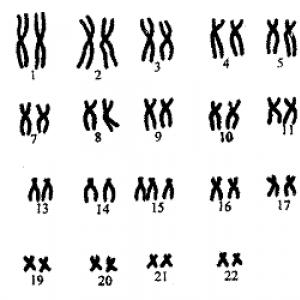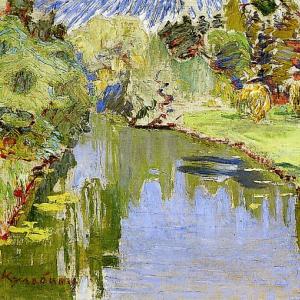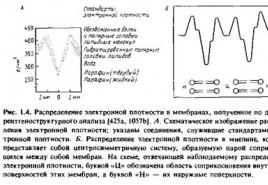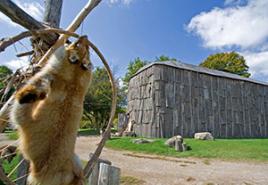Treatment depends largely on the extent of the disease. Actions of the population
The Russian national team doctor Eduard Bezuglov told how a football player can avoid losing shape during the winter holidays, noted foods that are best avoided on vacation, and gave recommendations for recovery. The specialist also told how many FNL football players underwent rehabilitation in his Moscow clinicSmart Recovery and noted the good physical condition of Kirill Pogrebnyak.
The winter break in the FNL is longer than the break in the RFPL and much longer than the break in the leading European championships. In this regard, are there any special recommendations for keeping a football player in shape: training, nutrition?
Indeed, a longer pause leaves a certain imprint. If you rest too “well” for a long time, then it will be very difficult to get into a working rhythm and have time to lay a functional base at the training camp. Detraining occurs after just three weeks of inactivity. And detraining combined with excess weight and weakened muscle tone is a dangerous mixture for health.
At the same time, guys who spend the off-season wisely receive an advantage from the first training camp, which only grows over time. Therefore, I would recommend passively resting for no more than 2 weeks, and then systematically preparing for the training camp: building an aerobic base and working on weak points. For this, 4-5 workouts per week for 60-90 minutes are enough. Moreover, they are tolerated very well and can be performed anywhere in the world.
- Are there any activities or foods that you should abstain from while on vacation?
It is clear that in the off-season the athlete’s diet becomes more varied and you can take some liberties. The main thing is not to gain more than 2-3 kg of excess weight. Subsequently, forced weight loss can negatively affect muscles and tendons.
Minimum of refractory fats;
Minimum of sweet carbonated drinks;
Minimum alcohol;
Minimum of semi-finished products (sausages, sausages);
Minimum snacks and simple sugars.
Most FNL clubs have only the most basic means of recovery. Can an athlete perform at his best with minimal resources for recovery? How can he compensate for the lack of these funds?
Believe me, if there is a desire, any football player in any league can recover at the highest level: this primarily depends on the athlete’s level of consciousness and to a much lesser extent on material capabilities.
Five main ways to recover as quickly as possible after the end of the load:
Intake of protein (20-30 g) and carbohydrates (70-80 g) in the first half hour.
Compression jersey, which should also be used during flights.
Replenishment of water and electrolyte balance. Over the course of 3 hours, we drink 1.5 times more liquid than we lost in weight: we lost 1 kg during the game, which means we drink 1.5 liters.
Cold baths. The simplest ice maker produces 15-20 kg of ice per day. An inflatable pool costs only a few thousand rubles. 5-7 minutes from the waist up, and you don’t have to worry about exacerbating urological problems (laughs).
Sleep is the most important thing in recovery! At least 8-9 hours of sleep every day and, believe me, you will have much more strength.
It is also important to monitor your carbohydrate intake. FIFA recommends consuming 6-7 grams of carbohydrates per kilogram of body weight on the pre-game day. To obtain carbohydrates, it is good to eat spaghetti, baked potatoes, buckwheat, brown rice, special bars, and carbohydrate gels. To replenish glycogen stores in the muscles and liver, I would recommend these doses of carbohydrates in the first two days after the game.
As you can see, there is nothing complicated! And don’t believe in fairy tales about magic droppers and some kind of nanotechnology - in 99% of cases these are fairy tales.
You cited RFPL statistics, according to which players on each team receive 40-50 injuries per season, 18-20 of which are muscle injuries. There are periods in the FNL when teams play three rounds on cold fields or on low-quality synthetics three days into the fourth. At the same time, the spread of cities in the first league is greater than in the RFPL. Do you have statistics on injuries in the FNL?
I don’t have injury statistics for the FNL. This requires systematic work over many years. So far I have not seen such a desire on the part of my colleagues. But constant transition from one surface to another, flights, games every three days increase the risk of injury - this is a proven fact.
Reducing the level of injury largely depends on the level of self-awareness of the football player himself. If you get enough sleep, eat right, are not overweight, and regularly train to prevent injuries, then there will definitely be fewer problems.
FIFA developed the “11+” program a long time ago, and in teams that implemented it on an ongoing basis, injuries decreased by 2-3 times.
- What is worse for a football player’s joints: old synthetics or frozen lawn?
Both options are bad, and their combination is simply disgusting.
In such conditions, and this, unfortunately, is our reality, the recommendations listed above for reducing injuries play an even greater role.
- Most FNL football players are not rich people. Are you sure that they will provide services in your clinic?
The clinic is often visited by football players from FNL clubs and they often come after clinics where prices are much higher. At the same time, we try to treat the guys taking into account their profession, and not as ordinary people, and believe me, these are often different things.
So, the financial factor, in our case, definitely shouldn’t stop us.
- How many players from the FNL are undergoing or have undergone rehabilitation in your clinic?
It depends on what you call a serious injury. There are injuries that can threaten your overall health. There are injuries that can threaten your future career.
The second group includes all ruptures of the crosses, ruptures of the tendons of large muscles, fractures of long tubular bones, as in Kirill Pogrebnyak. Unfortunately, there are many such injuries, but now with adequate rehabilitation the children can be helped.
The first group primarily includes head and spine injuries, so I will name the injuries of Andrei Lunev in the game with Spain and Vasily Berezutsky in the game with Austria. It’s good that everything worked out and the guys returned to duty fairly quickly.
Interviewed by: Artur Fedorkov
Improving the qualifications of a mathematics teacher largely depends on the degree of proficiency in the ability to analyze one’s own activities and the activities of one’s colleagues. Analysis and self-analysis of the lesson should be aimed at comparing the put forward educational, educational and developmental goals with the achieved result. The lesson is a living cell of the educational process; everything that is most important and most important for the student is accomplished in the lesson. Is each lesson a step in the student’s knowledge and development, a new contribution to the formation of his mental and moral culture? Not every. Why didn't the lesson work out? We ask ourselves and come to the need for introspection. Pedagogical work is fundamentally close to scientific work. The scientific nature of pedagogical work lies, first of all, in the analysis of facts and the need to anticipate them. There are quite a lot of schemes, algorithms for analysis and self-analysis of a lesson now offered in the methodological literature, but basically they are compiled along the path of least resistance - the presentation of facts. The most difficult thing is to interpret the fact! The problem of lesson analysis was studied a lot by the world-famous scientist-didact Yuri Anatolyevich Konarzhevsky.
Slide 3 from the presentation “Lesson self-analysis as a means of increasing teacher effectiveness”Dimensions: 720 x 540 pixels, format: .jpg. To download a slide for free to use in class, right-click on the image and click “Save Image As...”. You can download the entire presentation “Lesson Self-Analysis as a Means of Improving Teacher Efficiency.pptx” in a 133 KB zip archive.
“Degree with a negative exponent” - Follow the steps. Calculate: Solve the equation. A degree with a negative exponent. Solve the problem. Simplify the expression:
“Properties of a degree” - Application of knowledge to solve problems of varying complexity. Development of perseverance, mental activity and creative activity. Computational pause. Task. Test. Check yourself! Properties of a degree with a natural exponent. Generalization of knowledge and skills in applying the properties of degrees with natural exponents.
“Degrees of comparison of adverbs” - What words are involved in the formation of the complex comparative degree of an adjective and an adverb? Differences between degrees of comparison of adjectives and degrees of comparison of adverbs. Question: The superlative degree for adverbs... For an adverb in the Russian language, only a complex form of the superlative degree is possible. 2. What category of adjectives has degrees of comparison?
“Powers of Two” - List of materials used. 1011011101 = 2 + 2 + 2 + 2 + 2 + 2 + 2 = = 512 +128 + 64 + 16 + 8 + 4 + 1 = 733. Let’s convert the number 1998 from decimal to binary. Rules for converting from one number system to another. 3. Add the decimal values. Now let's convert 1011011101 to decimal notation.
“Exponent with a natural exponent” - Raising a fraction to a power. If a?0, then a0=1. N zeros. Properties of a degree with a natural exponent. A+a+a+a+a= a+a+a+a+a+a+a+a+a+a= a+a+…+a =. Division of degrees with the same bases. Earth mass – 5.976 × 1024 kg Electron mass – 9.11 × 10-31 kg. Determination of degree with a natural indicator. How to write in short.
The soil can be different: clayey, loamy, sandy, sandy loam, peat. And also acidic, neutral and alkaline. Which one do you have on your site? Without knowledge of such an indicator as soil acidity, you should not even dream of harvesting. A lot truly depends on its level. Most crops prefer a slightly acidic and neutral environment. Acidity is a very important point for the farmer. After all, it significantly affects the fertility of the soil and, accordingly, the harvest. Associate Professor of the Department of Vegetable Crops of the Belarusian State Agricultural Academy, Candidate of Agricultural Sciences Anna Gordeeva is one hundred percent sure of this.
The reaction of the soil environment is a kind of checkpoint that determines whether plants can live in given conditions, explains Anna Petrovna. - In acidic soil, the content of iron, molybdenum and aluminum ions is increased, which is toxic and painful for some plants and at the same time beneficial for others. Beneficial bacteria that absorb and accumulate nitrogen necessary for plants die in such an environment.
The degree of penetration of heavy metals present in the soil into plant tissue also depends on the level of acidity. If the pH value is within the neutral region, heavy metals remain bound in the soil and only a small part of them enters and accumulates in plants. The picture is the same with radionuclides: the extent to which they are absorbed by plants depends on the pH value.
In acidic soil, the activity of beneficial microorganisms is also suppressed. But soil is a living organism. The largest part by weight (80 - 85%) in the soil volume is made up of invisible microorganisms, bacteria, fungi, and visible insects and earthworms - 20%. And the more fertile the soil, the more living helpers there are. After all, they are the ones who produce the substances necessary for plant nutrition.
The acidity of the soil is determined by the amount of lime it contains. The less it is, the more sour it is. And vice versa: the more lime, the more alkaline it is. The degree of acidity can vary from 0 to 14. In Belarus, the pH, as a rule, ranges from 4.5 (acidic soils) to 7.0 and higher (neutral and slightly alkaline).

When organic matter breaks down, carbon dioxide is released during the respiration of plant roots and microorganisms. In contact with water, it forms carbonic acid, which acidifies the soil solution. When waterlogging occurs, calcium and magnesium ions are washed out from the arable horizon. Hydrogen ions take their place on the soil particles, and the soil becomes acidified. Where more than 500 mm of precipitation falls annually per year, from 1 sq. m are washed out up to 55 g of calcium. Approximately the same amount is removed from the soil and with a good harvest. Pine needles, fresh manure, and some mineral fertilizers somewhat acidify the soil. In particular, “Ammonium sulfate”, sulfur, “Urea” (or “Urea”), “Ammonium chloride”.
Acidic soils contain significant amounts of aluminum, iron and manganese in the form of compounds that are unfavorable for most crops. It is necessary to apply much more fertilizer, which naturally reduces the effectiveness of beneficial microorganisms and increases the amount of pathogenic microflora and bacteria that have a negative effect on plants. The more acidic the soil, the worse the root system develops, which is why the nutrients necessary for growth and development are poorly absorbed.
What soil is most favorable for garden plots? It’s impossible to answer unequivocally: it depends on what grows on them. Each culture has its own tastes (see table No. 1). You can also determine the acidity of the soil by eye if you look closely at the plants that have settled in the garden. They are the most reliable indicator of soil composition.
But sometimes mint, clover, nettle and quinoa grow in the plots. And all of them are “indicators” of different types of soils. There are several methods to resolve the situation.
The first is using litmus paper. Dig a hole 30 - 35 cm deep in the area. Take 15 - 20 g of soil from the vertical wall in three to four places. Pour it into a glass, add 50 ml of rain or distilled water (in a ratio of 1 to 2) and mix well. Let it sit for a while and lower the litmus paper. If it turns red - the soil is strongly acidic (pH 4 - 4.5), pink - acidic and slightly acidic (pH 5 - 6), yellow - close to neutral (pH 6.1 - 6.5), greenish – blue - neutral (pH 6.51 - 7). The alkaline reaction will give a rich blue-green color. Weakly alkaline pH 7 - 8, medium alkaline pH 8 - 8.5, highly alkaline pH 8.5 or more.
You can check the acidity differently. Boil the earth in water, cool the solution and filter through a thick cloth until it becomes transparent. After this, add juice from purple flowers (iris, chamomile). If the solution turns green, it means the soil is alkaline, and if it turns red, it means the soil is acidic.
If there are neither litmus tests nor irises, then use currant or cherry leaves. Place 3 - 4 of them in a glass with distilled or rain water brought to a boil. Cool the infusion and dip a piece of soil into it. Based on the color of the solution, determine the reaction of the medium: red - acidic, blue - slightly acidic, green - neutral.
At home, you can determine acidity in a different way. 1 tsp pour the soil onto the glass, which you place on any dark surface. Pour a small amount of regular 9% vinegar onto the soil and watch for foam. If nothing happens, this is a sign of increased acidity (since vinegar is an acid, you should not expect a violent reaction when mixed with acidic soil). If foaming is strong, then the soil is alkaline, moderate - neutral.
Some soil acidity is determined using ordinary chalk. Place a handful of earth into a bottle, put a pacifier or fingertip on it, and fill it with water. It should be 1.5 - 2 times more than soil. Then add 0.5 - 1 tsp. chalk and immediately close the bottle with a pre-twisted nipple (to remove air from it). Once you put it on, it will straighten out. But due to the lack of air inside the bottle, the nipple will still be compressed. Then shake the bottle vigorously for 3 to 5 minutes. Watch your pacifier carefully! If the acidity of the soil is high, then when shaking between chalk (alkali) and acid in the soil, a neutralization reaction will occur and carbon dioxide will be released, which will create pressure in the bottle - and the nipple will straighten out. With neutral soil, the nipple will remain in its initial position, and with medium acidic soil, it will open only half.
The soil type is also determined by the topsoil layer. If a whitish layer similar to ash is visible in the upper 20 - 25 cm, we can safely talk about acidic soil. An indicator of increased acidity is also greening of the earth, especially if the area is not in the shade.
For a more accurate determination, use the Alyamovsky device, which can be purchased in stores. Or they submit soil samples to agrochemical laboratories, which are located in every region.
So, we have determined: the soil on the site is acidic. What to do next? Do I need to deoxidize? It all depends on what crops you are going to grow. The fact is that some plants prefer acidic soils. These are hydrangeas, rhododendrons, perennial lupine, heather, Erica, fern, cinquefoil, blueberry, cranberry, lingonberry. But among vegetable crops there are practically no lovers of acidic soils. Cabbage is affected by clubroot, carrots by phomosis, beets by heart rot, and onions by neck rot. And vegetables are delayed in terms of ripening. In addition, there are a lot of pests that like acidic soil. Wireworm, for example.
Soil acidity is reduced by adding chalk, lime, dolomite and phosphate rock. And also wood ash, well-known and quite accessible to every gardener (1 kg is equivalent to 0.5 - 0.6 kg of lime), which simultaneously enriches the soil with calcium, potassium, phosphorus and microelements. The addition of bedding manure or compost also reduces acidity. Since most plants cannot tolerate fresh lime, liming is best done in the fall, using both slaked and quicklime.
Soil acidity does not change immediately. Depending on the dose applied, a slightly acidic or neutral reaction is established after 1 - 2 or even 3 years. The amount of lime that needs to be applied to correct the situation depends on the acidity of the soil. As a rule, on mineral lands, 100 to 600 g of lime, chalk, dolomite or limestone flour are added per 1 sq. m. m or 1 - 6 kg per hundred square meters. At a pH of 4.5 - 5.0, give 200 - 600 g of lime fertilizers per 1 sq. m; at pH 5.0 - 5.5 - 100 - 400 g per 1 sq. m, at a pH of more than 6.0, liming is not carried out at all (see table No. 2).

When adding lime, it must be thoroughly mixed with the topsoil. Therefore, it can be used for plowing or cultivation. In the spring, if necessary, liming is carried out 2 - 3 weeks before sowing for shallow digging.
Since lime accelerates the decomposition of organic matter in the soil, manure or other organic matter must be added along with it to maintain fertility. But under no circumstances should it be combined with nitrogen and phosphorus fertilizers. In the first case, nitrogen losses will increase, in the second, the availability of phosphorus for plants will decrease. If you don’t know whether you can mix lime with some mineral fertilizers, then apply everything separately. In the fall - lime, and in the spring - “mineral water”.
Lime deoxidizes the soil, improves its physical properties, enhances the activity of beneficial microorganisms, and also reduces the mobility of an element harmful to crops - aluminum. With lime, calcium necessary for plants enters the soil, which is in 4th place in importance after nitrogen, phosphorus and potassium. The advantages of liming also include increasing the looseness of the soil - such soil will absorb moisture well and retain it close to the surface. This way, the plant roots will receive optimal impregnation even in hot weather. If liming is carried out correctly, the yield of vegetables, berries and fruits increases several times, and the plants become more resistant to diseases.

But you shouldn’t overuse lime: moderation is important in everything. Excessive liming will lead to a deficiency of copper and boron in the soil and will reduce the supply of potassium. Plants will begin to get sick more often. In addition, the soil will become alkaline and the amount of molybdenum in it will increase, which in excess is harmful to crops.
In what form should lime be applied to the soil? Since it must mix well with the soil, it is better to use it as a powder. Quicklime is not suitable: it is lumpy. Therefore, it needs to be extinguished, that is, filled with water - 4 buckets of water per 100 kg of lime. After the water is absorbed, the lime will become powdery and can be used. Slaked lime (or fluff) neutralizes the soil faster in the first few years than regular lime flour.
After adding lime, the soil must be dug to a depth of 15 - 20 cm. Otherwise, the effectiveness of liming is reduced. Autumn liming allows you to more accurately adjust the ratio of acids and alkalis in the soil, and the result will last for a longer period than when applying lime in the spring.

COUNCIL "SB"
To acidify the soil intended for growing vegetables, it is best to use compost or manure. On average, to reduce acidity by 1 pH per 1 sq.m of soil, it is enough to add 9 kg of compost or 3 kg of manure.
HELP "SB"
On medium and strongly acidic soils you will probably find sphagnum, cotton grass, cat's foot, sorrel, oak grass, large plantain,

Common sorrel, creeping buttercup, horsetail, tricolor violet, oak veronica, white grass, turf pike, woodlice.
On slightly acidic and neutral soils, odorless chamomile, common coltsfoot, clover, white sweet clover, creeping wheatgrass, marsh marigold, dried grass, poisonous buttercup, bearberry, European rosewort, swamp white-brown, dog violet, meadow heart, ground reed grass, and field sow thistle.
Alkaline soils will be produced by white gum, larkspur, self-seeded poppy, cinnamon grass, crescent alfalfa, hairy sedge, horned lambsfoot, goosefoot, nettle, wheatgrass and clover.
If we talk about happiness, then we need to ask several questions at once. What is happiness? Does it really exist or is it an illusion? What does happiness depend on? Is it achievable? Does it exist in this world or only in another life? Even before our era, philosophers tried to comprehend these questions. There have been many different approaches to happiness. The pinnacle of these reflections were the works of Aristotle, whose ideas about happiness remained unsurpassed for a very long time. Nothing more serious appeared for a long time after Aristotle.
Aristotle gave the following definition: “Happiness is the activity of the soul in the fullness of virtue.” He believed that the understanding of happiness depends on who we ask. To find out what happiness is, we must ask wise people, because different people will give different answers. Therefore, the first main idea is that everyone has their own happiness. It may vary from person to person. The dictionary definition of happiness is: “Happiness is the highest good available to man.” But there are disagreements about what this good is. Aristotle and many of his contemporaries tried to determine what exactly a person needs to be happy, what properties and virtues a person should have in order to be happy.
Experimental studies of happiness
But there is another approach, according to which a happy person is the one who feels like that. In this case, happiness is understood as a certain emotional state, the most positive experience available to a person, which is sometimes described as an optimal experience. In the last 30–40 years, experimental psychological research on happiness has developed, taking into account mass surveys around the world. Since then, a lot of new things have appeared in the study of happiness problems. The researchers write that we have learned more about happiness in the past 30 years than in the previous 2,000 years since Aristotle.
Experimental research began with psychologists collecting together all the indirect evidence and common sense stereotypes and developing assessment techniques. Research has shown that about half of what was thought to be obvious was confirmed, and half was not. For example, it was believed that young people are happier than older people. It turned out that happiness is not related to age. Young people have more intense positive emotions, but also more intense negative emotions. And the overall balance of positive and negative emotions has nothing to do with age. The situation with gender was approximately the same. Women are both happier and unhappier. They have more positive emotions than men, and more negative ones. But in general, everything in nature is balanced. Since the time of Ecclesiastes, the stereotype “woe from wit” has been known, according to which the smarter a person is, the less chance he has of being happy. When psychologists began to study this hypothesis, it turned out that this is not so, there is no natural connection.
The level of happiness largely depends on the general make-up of the individual - temperament and character. Some scientists have written that 50% of happiness is explained by genetic factors, that is, the psychological characteristics of our biological parents. But data shows that this is not entirely true. Epigenetic studies, that is, studies examining the relationship of genetic factors and causes with environmental factors, suggest that the influence of these factors can vary from 10 to 40%. However, there is no one or two main genes that influence subjective well-being. There are a number of different genes, each making a small, albeit statistically significant, contribution. In total, taking into account the interaction with the environment, they make a fairly significant contribution.
Subjective view of happiness
Happiness is largely a matter of subjective opinion. There have been studies examining how happy people are in the most disadvantaged social groups, that is, people with severe incurable diseases, the disabled, the homeless, the unemployed, and representatives of the lower social strata. Scientists interviewed people who live in extremely unfavorable natural conditions: Greenlandic Eskimos, Maasai in the jungles of Kenya, street prostitutes in India. They were expected to have low ratings of their life satisfaction. But it turned out that the vast majority had a positive balance and people who feel unhappy were a minority even in these groups.
German psychologist Ursula Staudinger talks about the “paradox of subjective well-being”: people can be happy regardless of the presence of obvious reasons for this. American psychologists Sonja Lyubomirsky and Ken Sheldon summarized the results of various studies and formulated a model known as the “pie model.” The pie is divided into three unequal parts, representing three groups of factors that determine individual differences in people's assessment of their own subjective well-being or happiness.
First group - external factors that do not depend on us, conditions in which we are lucky or unlucky to be born and live.
Second group - factors associated with a stable personality type. There are people who are happy by their nature. Nothing can take them out of a positive state. But there are unhappy people, like Eeyore. Nothing can make them happy.
Third group - this is what we build with our own hands. These are our goals that we set and achieve, the relationships we build with other people.
It turned out that the distribution of weight of these groups of factors is very different from what stereotypes suggest. External factors related to geography, social conditions, wealth, and education explain 10–12% of individual differences in happiness. Less depends on them than it might seem.
The dependence of happiness on material well-being
Since the 1990s, mass surveys of thousands of samples in different countries have been conducted with periodic repetitions to identify the dynamics of changes in happiness in different countries and what it depends on. The question on the surface is: does money bring happiness? To what extent does happiness depend on income level, gross domestic product per capita, and so on? It was found that the dependence curve is divided into two parts.
In the first, lower part of the curve, where we are dealing with the poorest countries, this straight line goes up as the level of well-being at the nation level increases, there is a sharp increase in assessments of subjective well-being. This pattern is very clear and manifests itself not only at the level of nations, but also at the level of individuals. When basic needs are not met, a person does not eat well and he has no confidence in his own safety, there is no roof over his head, no home, and so on, then he has many reasons for negative emotions. Frustration arises in life, which prevents him from being prosperous.
Satisfaction of basic needs roughly corresponds to what is nowadays designated by the concept of “middle class”. This is the level of well-being at which people have the opportunity to eat well, lead a healthy lifestyle, have medical care, a roof over their heads, and education for themselves and their children. These are very specific needs that have limits of saturation.
Then it turns out that the dependence of happiness on material well-being is changing. The curve breaks sharply. It becomes much flatter. There have been discussions over the past 5-8 years about whether well-being stops growing after a tipping point, or continues to grow but much more slowly, or, conversely, starts to go down a little.
The most recent evidence that has been published on this topic suggests that further increases in material wealth are positively associated with happiness, but this relationship is mediated by what you spend your money on. This has to do with the art of spending the money you have to satisfy your truly deep personal psychological needs, and not just some primitive consumerism. And it turns out that it’s not so much the wealth itself that matters, but the meaning you attach to money. People who place more importance on money are less happy than people for whom money is not the most important thing in life.
Happiness is not a destination, but a journey
Russian philosophers of the Silver Age much criticized the idea of happiness and the pursuit of happiness as the main principle of human behavior. Nikolai Berdyaev, in particular, noted that in a state of happiness a person stops and does not need anything else. All motivation is nullified. Happiness is a state of complete merging of the desired with the actual. And in this sense, striving for happiness means striving for a stopped moment. It is no coincidence that they often say about the state of happiness that at this moment one can or even wants to die, because nothing else is needed. But happiness cannot last long for a number of reasons. We are always doomed to move in the direction of what we want. Only for a very short time can we fully achieve this merger, and then we again live at some distance from what we want. And this distance creates the tension that leads to the fact that at certain moments in life we experience a state of happiness, and the rest of the time we try to find this state again.







